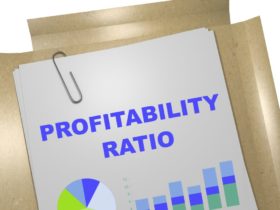Solvency ratios are financial ratios which are important for investor to assess the financial health of the company. These ratios can tell an investors if the company is able to honour the debt obligations in the long term.
Whenever a company wants to expand operation and production it seeks to raise funds through debt or equity. Solvency ratio calculates a company’s debt position with respect to the assets it generates.
If a company uses debt to fund its growth, then it should be done in a sustainable way so that the company does not go bankrupt in a few year down the line. The company must strike a balance between growth and managing its debt.
A company must be able to payback its loan amount and its interest on time, so that its creditworthiness and relationship with the bank or any other financial institution does not turn sour.
We will look at some important solvency ratios which the investors can use to determine the financial position of the company. If a company is over leveraged, i.e., if its debt is too high in comparison to the asset, earnings or cashflow it generates, then its risky to invest in the company.
Debt to Equity Ratio
Before we calculate this ratio, we have to calculate the total debt and total equity from the balance sheet. Total debt include both long-term and short-term debt. Debt which are payable within one year or in the current fiscal year are called short-term debt and debt which are payable after one year are known as long-term debt.
Debt to Equity ratio = Total debt / Total Shareholder’s Equity
Total Debt = Short-term Liabilities + Long-term Liabilities
Total Shareholder’s Equity = Share Capital + Reserves and Surplus
Interest Coverage Ratio
The interest coverage ratio evaluates a company’s capacity to service its interest expenses on its loans through the income its earns. The operating profit of a company is important as it is from that earnings a company will be able to meet the interest expenses. Higher the interest coverage ratio, then the company is well positioned to pay the interests.
Interest Coverage ratio = Earnings before Interests and Taxes / Interest Expenses
where,
Earnings before Interests and Taxes = Revenue − Cost of Goods Sold − Operating Expenses
Debt to Asset Ratio
The next ratio in the solvency ratio list is the debt to asset ratio. This ratio measures the company’s total debt to its total assets which gives investors a hint how much of debt is funded to generate the assets. If this ratio is higher, then the debt is more than the assets available with the company. This is a risky situation for the company and the investor because if there is unexpected event and the company goes bankrupt, then the total debt cannot be repaid by selling the assets.
Debt-to-Assets ratio= Total Debt / Total Asset
Proprietary Ratio
The ratio measures the company’s ability to finance assets with shareholder’s equity. The ratio must be higher so that the company is financial healthy and was able to acquire assets using less debt, while if the ratio is lower, then the company has a lot of debt in comparison to equity.
Proprietary ratio = Total Shareholders’ Equity / Total Asset
To read more about financial ratios, click here


